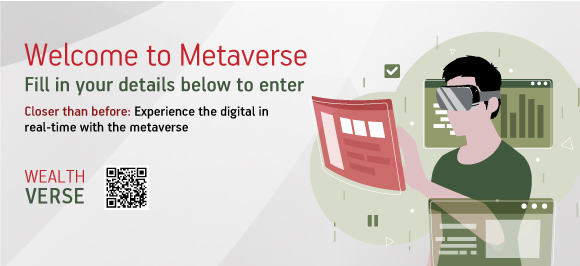Money. Inflation. Debt.
I'm sure you are well versed with these terminologies if you watch the news or have done research for your own investment or business purposes. No matter what your goals are, whether it’s starting a business, sustaining yourself in you and your family, or future retirement planning - it’s so important that you are aware of how money works, how the value of money changes and how it affects you.
So, ladies, you all have surely heard things like, "Hum jab tumhare Umar ke the, tab chocolate 10 paise ka aata tha.
Ab tumlog ye 10 rupay deke khareed rahe ho." Or maybe you heard your grandfather saying, "Arey 100 rupay me to hum mahina nikal dete the."
Did you notice the common theme in all these situations other than our elders lecturing us?
Well, they were teaching us an important lesson. If you guessed that the common theme is that the value of money is changing, then you were absolutely correct! This, quite simply, is called inflation. Inflation is the rate at which the price of goods and services in a given economy rises over time. When the price of products’ increases, each unit of currency loses purchasing power, meaning you can buy fewer things with the same amount of money.
But how does money change its value? It’s important to first understand that money has no intrinsic value, only relative value. Moneys’ worth is measured by the ability to exchange it for something of value to the owner. And that’s why the purchasing power of money is so important to our discussion, like the chocolate example I mentioned earlier.
The purchasing power of any currency is defined as the number of goods or services that one unit of money can buy. But why do you need to know about purchasing power? Because inflation reduces the number of goods or services you can buy and that can significantly impact the cost of managing your household, running your business or saving for your future.
This can happen in two ways.
Let’s assume you are running a business. Let’s say you develop something, meaning you manufacture and then you sell it. As inflation reduces your purchasing power, your business will face higher raw material, meaning the cost of things you need to manufacture and develop your product will be more expensive, manufacturing, and overhead costs will all seem more expensive as you can afford less for the same amount of money that you used in the past.
While passing all expenses to consumers may appear to leave a business relatively unscathed, in reality, businesses will absorb a portion, if not the majority, of the additional prices to avoid increasing costs and potentially losing clients. For example, you have a clothing company. The production cost of a dress before inflation was 500 INR and you used to sell them for 800 INR.
Now, after the inflation, your production cost increased to 700 INR. If you make the price of the dress 1000 INR, there is a chance that many buyers will refrain from buying the dress. So, what do you do?
You make the price of the dress 900 INR and absorb the 100 INR, thus reducing what you make. When inflation rises, customers' purchasing power erodes, meaning they cannot buy as many products and services as they used to.
This means that companies will see lower sales, thus lowering total revenue. For example, the cost of the logistic part of your business would have been 4 lakhs, but now due to inflation, you have to spend 6 lakhs if you want to afford the same thing for your business.
Now, there are different types of inflation as well. When inflation is out of control, there are two types of inflation, hyperinflation and stagflation. These words refer to out-of-control inflation, which has a negative impact on both consumers' purchasing power and on economies. The first type of out-of-control inflation is hyperinflation. This happens when inflation accelerates, and the value of a country's currency plummets.
Economists say hyperinflation occurs when monthly prices rise by a minimum of 50%. This type of inflation is very rare, but it has occurred in the past during civil unrest, war, or when regimes have been overthrown, effectively declaring currency worthless. Another example of out-of-control inflation is called stagflation.
Stagflation happens when inflation remains high while the economy stagnates and unemployment increases. When unemployment rises, consumer demand usually falls as people cut back on their spending. As demand falls, prices typically also fall, thus helping to rebalance purchasing power. Stagflation, on the other hand, occurs when prices remain high even while consumer spending falls, making it more expensive to buy the same commodities.
Now you might be wondering how inflation happens. There are different reasons why inflation happens. Let's discuss them one by one.
The first one is called demand-pull Inflation. Demand-pull inflation occurs when demand for goods or services rises but supply, meaning the inventory, remains unchanged…causing prices to rise. There are several ways that demand-pull inflation might occur. People and businesses make increasingly more money in a strong economy.
Consumers can now buy more than they could previously, creating competition for current goods and increasing costs as companies try to scale up production. Demand-pull inflation can be created on a smaller scale by the sudden popularity of specific products. For example, here in our own economy, the sharp rise in vegetable prices is an example of demand-pull inflation, which occurs when market storage of products drives up prices.
I’m sure we are all noticing this and is often a discussion point amongst friends and family, right? The second one is called cost-push Inflation. Cost-push occurs when the supply of goods or services is restricted in some way but demand stays constant, thus seeing prices rise. Companies' ability to create enough specific commodities to meet consumer demand is usually hampered by some external occurrence, such as a natural disaster.
As a result, they can raise prices, resulting in inflation. Consider the price of oil, for example. To fuel your car, you—and pretty much everyone else— need a specific amount of gas. Gas prices rise when international treaties or natural disasters significantly decrease oil supply because demand remains largely consistent even as supply shrinks.
These were some reasons and examples for inflation. But it doesn't impact all people in the same manner. Non-essential goods and services are less affected than essential goods and services. In general, consumption of basic products and services is necessary. As a result, customers will continue to spend on needed products and services, resulting in decreased demand price elasticity or change.
When costs rise, consumers are more likely to cut back on non-essential purchases. When the price of necessary and non-essential commodities rises by the same amount, the non-essential goods see a far larger decline in demand.
For example, imagine that both the prices of cooking oil and perfume are rising. Here, as in many countries in the world, oil is an essential good because every household needs to use that in their cooking. But perfume is not a must-have in most cases. In this scenario, the price of perfume will be less affected by inflation. The impact is less in markets with fewer sellers. In a market or sector where there are many sellers, raising prices increases the risk of losing clients to a competitor who is prepared to keep prices the same.
Markets and sectors with a small number of vendors have more price power than markets with a large number of sellers. Simply, you have fewer options when there are fewer competitors in the market. Thus, in times of inflation, enterprises that sell in marketplaces with few alternatives may be less affected than those in areas with many sellers.
So, the number of sellers is inversely proportional to the price of the goods. The negative impact of price increases is often offset by brand power. When compared to generic items, consumers pay more for name brand goods.
Brand strength correlates to pricing strength. Consumers are more receptive to a price increase for products associated with great a great brand name since demand is significantly more inelastic. So that’s how inflation works and changes. One important thing we haven’t touched on is how inflation is measured. We hear it in the news, we feel it, but how do we know how much inflation is right now, or was previously and so on?
Inflation is primarily measured by two main indices, CPI, Consumer Price Index, and the WPI, Wholesale Price Index. The Wholesale Price Index measures wholesale and retail-level price changes. This is some retail terminology but Wholesalers sell to Retailers and then retailers sell their goods to us. So this index is measuring the price changes at both levels, the wholesale side and the retail side.
The CPI calculates the difference in the price of commodities and services such as food, medical care, education, electronics, etc. All the things we love, need and enjoy. You must be thinking, why is this important for me. Well, it’s a very important piece of the money puzzle.
Increasing inflation impacts our cash flow – if we know we have specific things we need each month and are used to paying a certain amount for it, now it changes and I have to pay more for the exact same thing. So, my cash flow is negatively impacted. Which leads to the question of affordability.
Think of your residence or perhaps an investment home you may have – could you afford the same thing at today’s prices versus 5 years ago, or 10 years ago. The cost of things like houses have increased drastically over time, making affordability a real issue for the next generation.
Now a days, inflation is being noticed even more so with things like gas for our cars – this for example, is impacting people’s transportation to and from work. Obviously this impacts your budget if it impacts your cash flow and affordability. Do you still have the same amount of money left over at the end of the month to save? Likely, in times of inflation, a review of your budget will be required to ensure you stay on track with your personal and financial goals
The other impact inflation does have is the long-term value of money. Over time, the purchasing power of one rupee decreases and will continue to decrease as long as the economy remains healthy. This is one of those reasons why it is so highly suggested to invest your money. If it sits there in your home doing nothing, it is actually doing something, losing value. OR you can invest it, aim to earn a return on your money over time thereby increasing your purchasing power or sustaining the value of your money.
On a larger scale, it impacts you even more if you have debt. Before that, let me ask you something. Do you know what determines the long-term impact of inflation? If you guessed the money supply then you are correct again. In the long run, the money supply has a direct and proportional relationship with price levels.
As a result, as the amount of cash in circulation rises, so does the price of products and services. Imagine your salary doubled tomorrow. Wouldn’t that be amazing? Well, technically, it will not. We may first feel twice as wealthy as before, but the cost of products and services will swiftly climb to match the new wage rate.
Inflation would soon force our money's true value to return to its earlier levels. As a result, increasing the money supply raises price levels. I bet you never thought it could be bad to double your salary, did you? Now let's come to how it can affect debt. Depending on conditions, inflation can help either the lender or the borrower.
The lender, for example, is the bank who lends the money to you, the borrower. This is where we now have to speak about interest rates. The interest rate is the amount a lender charges you, as the borrower. The rate is a percentage of the principal, which is the amount loaned. An interest rate can also apply to the amount earned at a bank – so this is money you get on your savings, or perhaps even from your investments.
So, interest works both ways, either in what you pay on your debt or what you earn on your savings and investments. The Reserve Bank of India, the RBI, is the primary group making the decision on whether the interest rates go down, stay the same or go up. The first thing to note is that interest rates and inflation tend to move in the same direction.
The reason is that if inflation rates are increasing, then increasing the interest rate helps to stabilize inflation. Let’s step back for a moment. First of all, you want the economy growing. It’s never good when the economy isn’t growing.
This means that you want inflation to be greater than 0. Normally, there will be a target inflation level that the Reserve Bank of India, RBI, will want to maintain which ensures the economy continues to grow and consumers, meaning us, continue to enjoy the current levels of spending and savings. As inflation begins to trend past that target, then an interest rate change will be required to bring the inflation rate back to the target.
If inflation continues to grow even after an interest rate increase, then you should expect more interest rate increases. Changing the interest rate is the primary mechanism for managing inflation. And that is why you are heavily impacted on your debt. If inflation rises, and the RBI decides to increase interest rates to combat the increasing inflation rate, it likely means you will pay more interest on the debt you are carrying.
There are other things that can be discussed as well, such as the quantity theory of money, but we will keep that for another discussion. So, coming back to money supply now - basically, money supply affects inflation. If the money supply has a significant impact on inflation, then the factors that impact the supply of money will also have an effect on inflation.
Let's see what those factors are.
We all know that if a government prints more money, the money supply increases. Aside from that, a variety of additional things might boost an economy's money supply. Bank reserve ratios may be reduced or interest rates may be reduced. Lower interest rates and bank reserves typically increase demand for low-interest loans, and banks have more money to lend.
More money in the economy leads to higher spending and demand for goods, resulting in inflation. People who hold bonds may sell government securities or corporate bonds to a central bank, such as the Reserve Bank of India. This would lead to an increase in cash for bondholders, allowing them to spend more.
A central bank's policy of buying corporate bonds, such as the Reserve Bank of India, would lead to companies issuing new bonds to generate capital to expand their enterprises, resulting in higher spending and investment. But who does this inflation help then? Borrowers or lenders? If wages rise in line with inflation, and the borrower owes money before inflation, the borrower profits from inflation.
This is due to the fact that the borrower owes the same amount of money, but now has more money in their salary to pay off the loan. If the borrower uses the extra money to pay off their debt early, the lender charges less interest. When a company borrows money, the money it receives now will be repaid later with the money it earns.
Inflation, by definition, causes the value of a currency to decrease over time. In other words, cash today is more valuable than cash afterwards. As a result of inflation, debtors can repay lenders with money that is worth less than it was when they borrowed it. Inflation can help lenders in a variety of ways, particularly when granting new credit.
For starters, greater prices indicate that more people would seek loans to purchase large-ticket items, especially if their salaries have not increased–this means that lenders will gain new customers. Furthermore, the lender earns extra interest because of the rising pricing of those items. For example, if the cost of a laptop rises from 50k INR to 60K INR owing to inflation, the lender profits more since 10% interest on 60K INR is more than 10% on 50K INR.
Furthermore, the extra 10K, and all of the additional interest, may take longer to pay off, resulting in even more profit for the lender. So, as you can see. inflation can help both borrowers and lenders. Now, we have covered a lot of information. Hopefully you have a better understanding of how inflation works, how interest rates and money supply impact inflation as well.
We are seeing inflation globally right now so this is a timely discussion. I understand, that for many of you, this amount of information might seem overwhelming and difficult to process at once. So, learn one thing at a time gradually and consistently. Continue to research additional information or speak to your financial advisor to see how this impacts your financial plan.
An Investor education and Awareness initiative of Aditya Birla Sun Life Mutual Fund
All investors have to go through a one-time KYC (Know Your Customer) process. Investors to invest only with SEBI registered Mutual Funds. For further information on KYC, list of SEBI registered Mutual Funds and redressal of complaints including details about SEBI SCORES portal, visit link : https://mutualfund.adityabirlacapital.com/Investor-Education/education/kyc-and-redressal for further details.
Mutual Fund investments are subject to market risks, read all scheme related documents carefully.







 1800-270-7000
1800-270-7000










